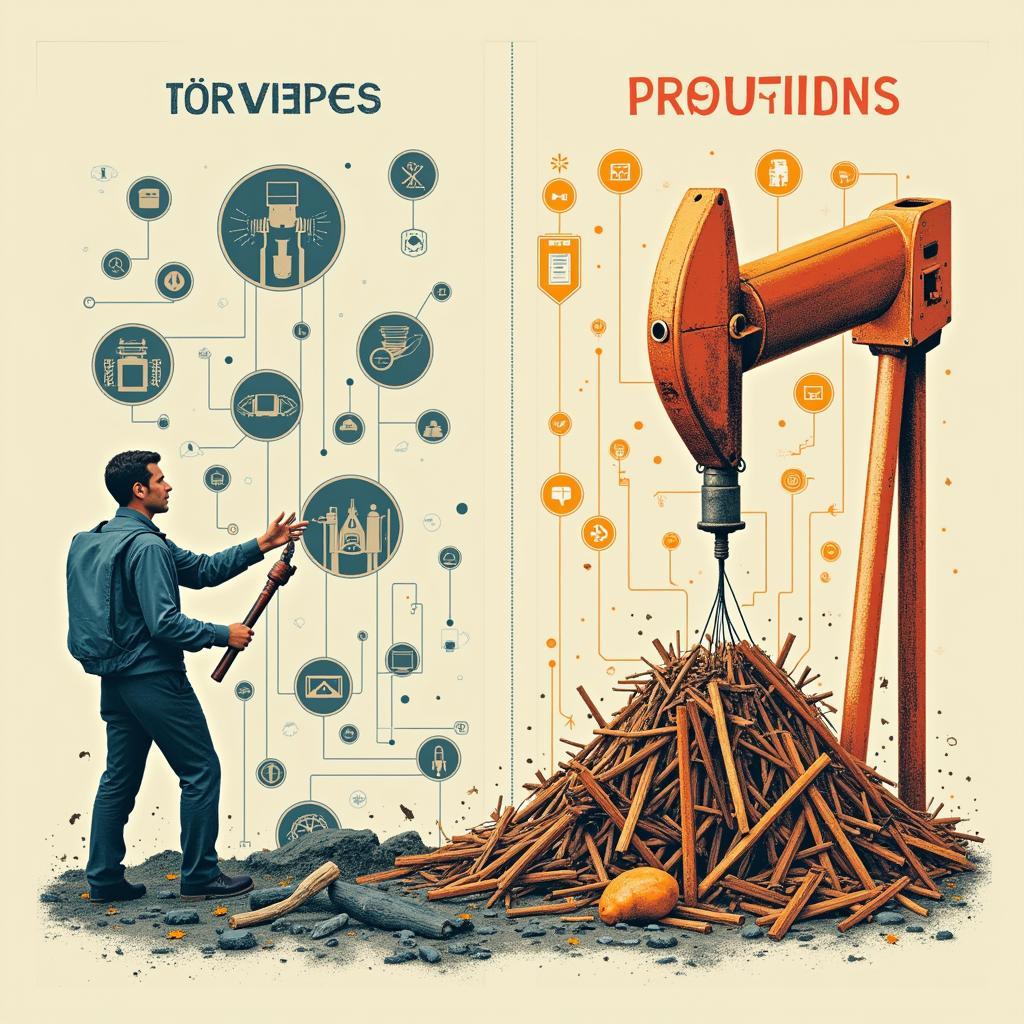Learning how to say “di tích lịch sử” in English opens up a world of possibilities for exploring fascinating historical landmarks. “Historical sites” or “historical monuments” are the most common translations, and understanding these terms allows you to connect with the rich tapestry of human history. Knowing the English equivalent also facilitates travel planning, research, and conversations with international friends about these captivating places. Let’s delve deeper into the world of historical treasures. You might even find inspiration for your next tour du lịch quy nhơn 4 ngày 3 đêm.
Understanding “Di Tích Lịch Sử” in English
“Di tích lịch sử” encompasses a broad range of locations, from ancient ruins to grand palaces. While “historical sites” is a general term, “historical monuments” often refers to structures specifically erected to commemorate a person or event. Other related terms include “heritage sites,” which emphasizes the cultural significance, and “archaeological sites,” which focus on locations with historical artifacts. Choosing the right term depends on the specific context.
Knowing how to say “di tích lịch sử” in English expands your ability to engage with information, connect with others, and explore these remarkable places. Whether it’s the Colosseum, the Great Wall, or Angkor Wat, knowing the appropriate English terminology enriches your experience.
Different Types of Historical Sites
Historical sites are categorized based on their nature and significance. This includes prehistoric sites, ancient ruins, medieval castles, battlefields, historical houses and museums. Each type offers a unique glimpse into the past.
For instance, prehistoric sites like Stonehenge offer clues to ancient civilizations, while medieval castles tell tales of knights and battles. Understanding these classifications helps you appreciate the specific historical context of each site.
Why Learn the English Term for “Di Tích Lịch Sử”?
Speaking English about “di tích lịch sử” enables clear communication with a global audience. Whether you’re discussing travel plans, researching a historical topic, or simply sharing your experiences, using the correct English terminology is essential. It promotes understanding and facilitates meaningful conversations. You could even plan a trip to see some danh lam thắng cảnh di tích lịch sử nổi tiếng.
Furthermore, knowing the English terms allows access to a wealth of online resources, research materials, and travel guides in English. This opens doors to deeper learning and broader perspectives on historical topics.
Tips for Visiting Historical Sites
When visiting historical sites, remember to be respectful of the location’s cultural significance. Dress appropriately, follow the rules and guidelines, and avoid touching or damaging any artifacts or structures. Engaging responsibly ensures the preservation of these precious landmarks for future generations. Perhaps you can bring a bình thủy mini du lịch to stay hydrated.
Dr. Emily Carter, a renowned historian, emphasizes the importance of respectful engagement: “Visiting historical sites is a privilege. We must act responsibly to ensure these treasures remain intact for future generations.”
Connecting with History Through Language
Learning the English term for “di tích lịch sử” is more than just vocabulary acquisition; it’s a bridge to connecting with the past. It empowers you to explore history in a deeper and more meaningful way. Embracing this knowledge enhances your understanding and appreciation of human history and cultural heritage. What is thanh lịch tiếng anh là gì?
Professor David Miller, a leading archaeologist, shares his perspective: “Language is a powerful tool for understanding the past. Learning the terms for historical sites in different languages expands our ability to connect with history on a global scale.”
Conclusion: Embracing History Through “Historical Sites”
Understanding the English term for “di tích lịch sử” – “historical sites” or “historical monuments” – opens doors to a world of historical exploration. It facilitates communication, enhances learning, and fosters a deeper appreciation for our shared human heritage. By embracing this knowledge, we can connect with the past in a more meaningful way. For sports enthusiasts, you might be interested in checking out the lịch thi đấu vô địch quốc gia argentina.
FAQ
- What is the most common English translation for “di tích lịch sử”? (Historical sites or historical monuments)
- What are some other related terms? (Heritage sites, archaeological sites)
- Why is it important to learn the English term? (Facilitates communication and research)
- How should I behave when visiting historical sites? (Respectfully and responsibly)
- Where can I find more information in English about historical sites? (Online resources, travel guides)
- What are the different categories of historical sites? (Prehistoric sites, ancient ruins, castles, etc.)
- How does knowing the English term enhance my understanding of history? (Provides access to more resources and broader perspectives)
Bạn có thể tìm hiểu thêm về các chủ đề khác trên trang web của chúng tôi như:
- Du lịch
- Lịch thi đấu thể thao
- Phong cách sống
Khi cần hỗ trợ hãy liên hệ Số Điện Thoại: 02033846556, Email: [email protected] Hoặc đến địa chỉ: 178 Ba Lan, Giếng Đáy, Hạ Long, Quảng Ninh, Việt Nam. Chúng tôi có đội ngũ chăm sóc khách hàng 24/7.
